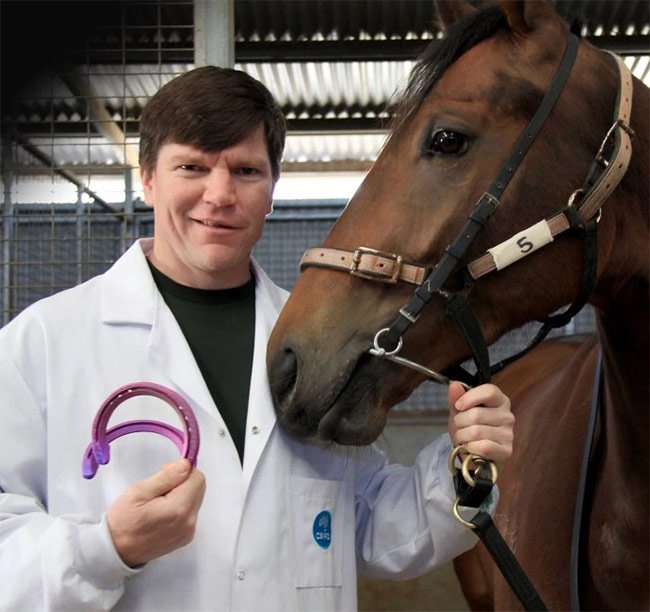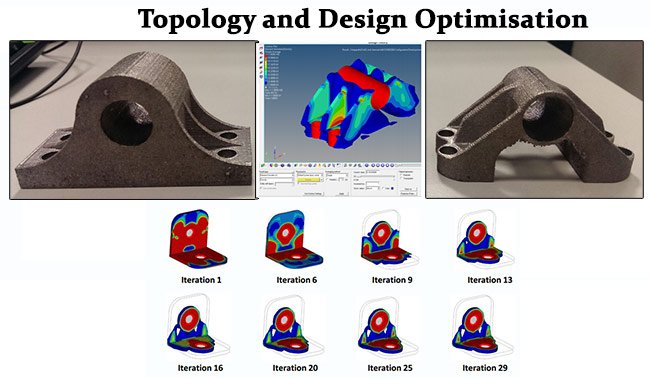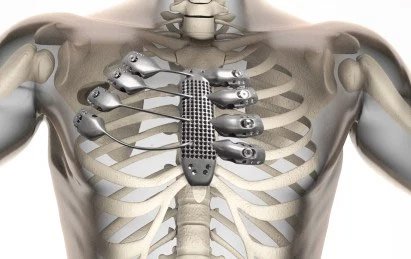The CSIRO’s 3D Metal Wonder Niche in Lab 22
Published 13-APR-2016 15:30 P.M.
|
5 minute read
Hey! Looks like you have stumbled on the section of our website where we have archived articles from our old business model.
In 2019 the original founding team returned to run Next Investors, we changed our business model to only write about stocks we carefully research and are invested in for the long term.
The below articles were written under our previous business model. We have kept these articles online here for your reference.
Our new mission is to build a high performing ASX micro cap investment portfolio and share our research, analysis and investment strategy with our readers.
Click Here to View Latest Articles
Manufacturing is evolving before our very eyes.
The Industrial Revolution delivered incredible progress in how things were made and helped to foster generations of growth and economic development. The process of Industrialisation created opportunties for manufacturing, trade and wealth and thereby helped to make poor countries rich as improvements in manufacturing, production and transport were commercialised.
Fast forward to today, and it would seem the world is once again evolving its industrial processes to become better at producing integral goods and services.
Additive manufacturing, more commonly known as 3D printing is shaping up to revolutionise the entire manufacturing process, removing a lot of waste and middle-men in the process. The very DNA of how manufacturing works is changing and it spells both dangers and opportunities for swathes of society.
CSIRO the visionary
The Commonwealth Scientific and Industrial Research Organisation (CSIRO) is Australia’s leading sciences research organisation working at the sharp end of a wide spectrum of industrial, manufacturing and scientific research projects.
The organisation itself is both privately and publicly funded with the two types of capital investment categories harmoniously merged for the benefit of scientific progress.
One of the CSIRO’s best examples of truly avant-garde and cutting-edge progress is its Lab 22 – a specialised additive manufacturing facility in Melbourne, Australia where the CSIRO is breaking new ground on a daily basis.
The lab’s name (Lab 22) originates from titanium’s atomic number in the periodic table which is rather fitting considering that Lab 22 works almost exclusively with titanium.

Other metals are also used as part of intricate alloys but its titanium where the CSIRO has identified most commercial applications for its technology.
Finfeed visited the CSIRO’s Clayton laboratory to see more, and speak to the CSIRO’s Additive Manufacturing Operations Manager Chad Henry, who showed us around.

Chad Henry, 3D Printing Operations Manager at CSIRO
Lab 22 up close and personal
The first thing we noticed when visiting the CSIRO is the hospitality.
Despite being a front-line research laboratory working on some of the most exciting technologies known to man, the CSIRO regularly welcomes both visitors to its research facility as well as inviting businesses to make use of the expensive kit the CSIRO has access to.

Additive manufacturing 3D printers: M2 Cusing Concept Laser (left) and Arcam lectron beam 3D printer (right)
“Small and medium-sized businesses cannot afford $750,000-$1,000,000 for just one of the 3D metal printing machines we have here at our disposal,” Henry says. “Instead of forking out millions on machinery, businesses can instead work hands-on with our researchers in order to perfect their product designs at a hugely reduced cost.”
Being partly government and privately funded allows the CSIRO to benefit from guaranteed funding as well as reach out to private enterprise for additional commercial opportunities. One of the CSIRO’s biggest success stories is its research on Wi-Fi technology that continues to reap royalties for the organisation to this day.
Printing along in Lab 22
The team working in Lab 22 works on a range of projects including jet fighter component parts, boutique biomedical implants and even horseshoes.
Being able to produce incredibly accurate metal components designed and ‘printed’ to exact specifications has given the CSIRO a leading role in shaping how Australia’s industrial manufacturing sector will evolve.
Currently, the CSIRO works with almost 3000 organisations across its 9 departments.

At Lab 22, dozens of businesses are given full access to its facilities subject to pre-agreed conditions and funding arrangements.
“We have created a simple and straightforward way for Australian manufacturers to use our facilities and improve their respective operations as much as possible. Given our funding structure, we offer the same deal to everybody and there’s no preferential treatment.”
On a broad basis, the CSIRO requires businesses to have established operations with annual revenue of between $1 million to $100 million in order to gain access to Lab 22. There is also the assumption that businesses will provide funding at least equal to the government-sourced portion.
Ultimately, the goal for both Lab 22 and dozens of companies using its facilities, is to decrease final component cost and increase the range of applications of printed metal technology.
“A common misconception is that 3D printing is going mainstream and can lowers costs across the board” Henry says.
“It’s actually quite the opposite. 3D printing does not lower the cost for standard components that can be easily mass produced. If you want to print a rudimentary bike part that costs $50, 3D printing and Lab 22 will not be able to beat that. But if you’re looking to design custom-made components for specialised applications – that’s where 3D printing comes into its own. They key is design optimisation,” he adds.

Businesses large and small are able to access the CSIRO’s facilities and create incredibly sophisticated components that could not have been produced in any other way.

Just recently, a cancer patient received a 3D printed titanium sternum and rib cage designed and manufactured at Lab 22 by Anatomics, an Australian bio-device manufacturer in partnership with the CSIRO. Some of the lab’s other wonders include jet engines, horseshoes, mouth-guards and even heel implants. The common denominator is that all of these components are customised and made to order for a specific patient or definitive end-use.
Using 3D printing to make simple components isn’t worth it because traditional machining methods can do it faster and in bulk quantities. But to create finely designed, geometrically-optimised components, additive manufacturing is the only way to do it.
With the help of the CSIRO’s Lab 22 3D printing techniques are improving all the time. The next step being to combine various other elements with metals to enable even wider industrial applications.
Having a state-of-the-art 3D metal printer in the comfort of your own home remains a distant fantasy, although that’s pretty close to how the printing press was first seen when it made its industrial appearance.
General Information Only
S3 Consortium Pty Ltd (S3, ‘we’, ‘us’, ‘our’) (CAR No. 433913) is a corporate authorised representative of LeMessurier Securities Pty Ltd (AFSL No. 296877). The information contained in this article is general information and is for informational purposes only. Any advice is general advice only. Any advice contained in this article does not constitute personal advice and S3 has not taken into consideration your personal objectives, financial situation or needs. Please seek your own independent professional advice before making any financial investment decision. Those persons acting upon information contained in this article do so entirely at their own risk.
Conflicts of Interest Notice
S3 and its associated entities may hold investments in companies featured in its articles, including through being paid in the securities of the companies we provide commentary on. We disclose the securities held in relation to a particular company that we provide commentary on. Refer to our Disclosure Policy for information on our self-imposed trading blackouts, hold conditions and de-risking (sell conditions) which seek to mitigate against any potential conflicts of interest.
Publication Notice and Disclaimer
The information contained in this article is current as at the publication date. At the time of publishing, the information contained in this article is based on sources which are available in the public domain that we consider to be reliable, and our own analysis of those sources. The views of the author may not reflect the views of the AFSL holder. Any decision by you to purchase securities in the companies featured in this article should be done so after you have sought your own independent professional advice regarding this information and made your own inquiries as to the validity of any information in this article.
Any forward-looking statements contained in this article are not guarantees or predictions of future performance, and involve known and unknown risks, uncertainties and other factors, many of which are beyond our control, and which may cause actual results or performance of companies featured to differ materially from those expressed in the statements contained in this article. S3 cannot and does not give any assurance that the results or performance expressed or implied by any forward-looking statements contained in this article will actually occur and readers are cautioned not to put undue reliance on forward-looking statements.
This article may include references to our past investing performance. Past performance is not a reliable indicator of our future investing performance.
